Genetics
Yellowstone Wolves: Everything You Want to Know and More
A new encyclopedic book chronicles their epic journey.
Posted February 8, 2021 Reviewed by Ekua Hagan
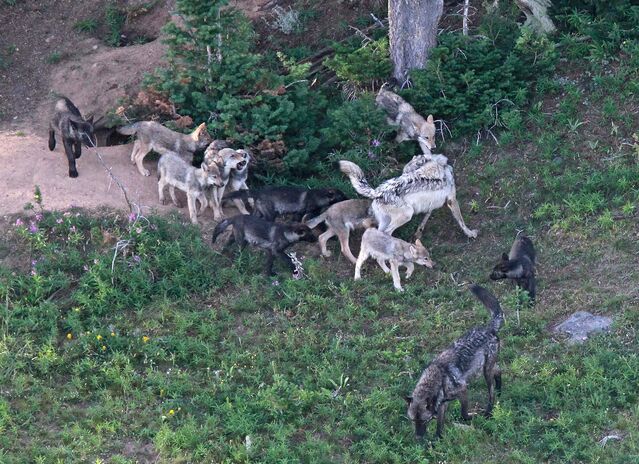
I recently read the most complete book of which I am aware of all aspects of the behavior of majestic grey wolves called Yellowstone Wolves: Science and Discovery in the World's First National Park, edited by well-seasoned wolf experts Douglas W. Smith, Daniel R. Stahler, and Daniel R. McNulty, with a foreword by Jane Goodall.1,2
The collection of essays, by a who's who of wolf researchers, is encyclopedic. It fully chronicles the epic journey of Yellowstone's wolves and the devoted researchers who have studied them there and in many other locations and is a must-read.
This interview with Doug Smith and Dan Stahler nicely follows up on other recent essays about these magnificent carnivores.3 Also included are Kira Cassidy's infographics, each of which is worth far more than a thousand words. One important message is that wolves are remarkably different individuals with extremely different personalities, and there is no "the wolf."4
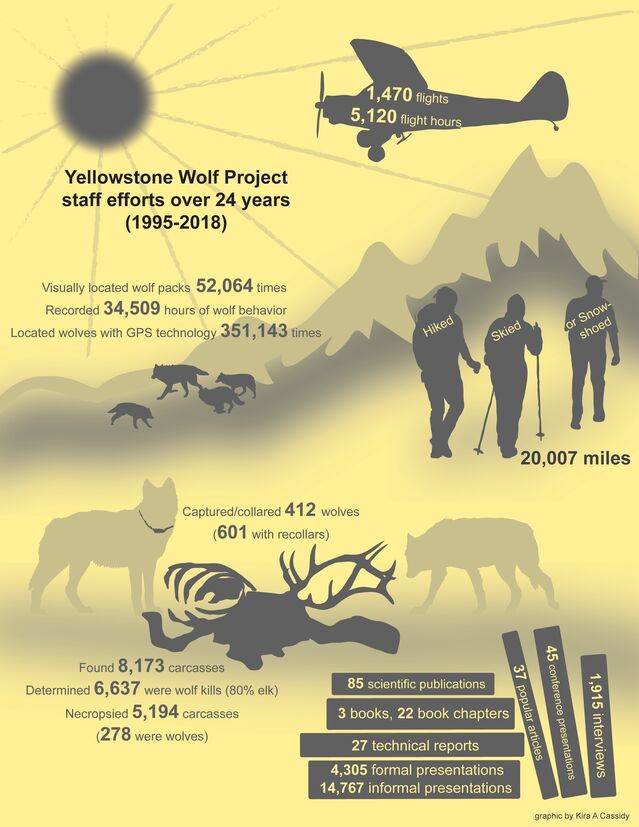
Q: Why did you compile the essays for Yellowstone Wolves?
A: One early vision for our book was to simply organize and edit a series of essays written by prominent wolf biologists by asking them to answer the question, "Why are Yellowstone wolves important?" We saw this open, relatively vague question as a nice way to garner different perspectives about the value of both wolves and Yellowstone to society.
This would have certainly saved a lot of time and effort on our end as both the editors and primary writers of many book chapters of the current book. But in the end, we felt we could make a larger contribution to the story of Yellowstone wolves if we were to both synthesize our science, as well as include diverse perspectives by others on the importance of returning wolves to this cherished national park. We think this strategy was a home run, and that readers will enjoy this aspect of the book.
Q: How did you pick the contributors?
A: From the beginning, the Yellowstone Wolf Project has embraced the collaborative nature of science to advance our knowledge about wolves and their role in the Yellowstone ecosystem. Given that the scope of our work spans across a wide variety of academic disciplines—genetics, behavior, disease, predator-prey, food webs, demography, human dimensions, policy—it was important to tap into a diverse and skilled pool of scientists to get the most out of the data we've collected over the last 25 years.
We combined our own research vision and fields of expertise with input and skills brought to the table by other researchers, academic experts, and emerging young scientists through graduate projects. We picked contributors that we had already collaborated with in the field and on peer-reviewed publications, allowing for the most comprehensive approach to synthesizing our collective understanding of Yellowstone wolves.
For those contributors that were not direct collaborators in our field studies, we felt it important to assemble diverse voices from a field of prominent experts on wolves and carnivore conservation from around the world, even if not everyone shared the same views about a particular topic.
Q: How does your book relate to your backgrounds and general areas of interest?
A: The three of us have all been involved with Yellowstone wolves since the early years of their recovery. Doug was the primary biologist who helped reintroduce the wolves to the park and cast a wide net in his research experience and interests in wolves, including population demographics and predator-prey dynamics. Dan MacNulty and I were among the first cadre of volunteer technicians to help collect data in the field. We both eventually went on to do both MS and Ph.D. work with Yellowstone wolves from different disciplines. Dan MacNulty focused early on with predator-prey dynamics, looking specifically at aspects of wolf hunting behavior on elk and bison as it relates to group dynamics and life-history traits of individual hunters. I delved early on into ecosystem impacts of wolves through their relationship with the scavenger guilds and other carnivores like cougars, eventually focusing on integrating genetics, pedigrees, and behavior into questions about the family dynamics of wolves. Throughout the book, the reader will find chapters on all these themes.
Q: Who is your intended audience?
A: It was important to us that this book reached as many people as possible. We struggled initially with the question of who we were compiling this book for. Academics? Wildlife managers? The general public?
In the end, our intention was to produce a book that was accessible to general lay readers with a limited understanding of biology and also be engaging to professionals in the realms of science, wildlife management, and policymaking. By integrating rigorous science, storytelling, personal essays, and dynamic photos and infographics throughout, we believe we provided something for everyone.
It is not lost on us that there exists a severe disconnect between scientific truths about wolves and peoples' perception of them. If we are not able to effectively bridge this gap, then our collective human and animal societies suffer, and so too does our planet. We know many more thousands of people will flip through this book than will ever read our scientific papers. We hope this audience represents a wide spectrum of beliefs, cultural values, and education. If only a small fraction of readers come to a greater understanding of the value of wolves and wild places like Yellowstone and reevaluate their relationship with nature, then we have succeeded.
Q: What are some of the topics that are woven into your book and what are some of your major messages and conclusions?
A: This book chronicles the story of the wolves’ return to Yellowstone after their persecution and eradication nearly a century ago. It synthesizes the science conducted by the core team of biologists at the helm of the reintroduction and research program, as well as the many collaborators. Over the intervening decades, scientists have studied a myriad of topics, including wolf population dynamics, wolf-prey relationships, social behavior, genetics, disease, multi-carnivore interactions, ecosystem impacts, and human-wolf relationships.

Despite wolves being among the most widely studied mammals on the planet, Yellowstone's long-term data on individuals' survival, reproductive success, pack composition, genetic relatedness, hunting behavior, and territorial aggression has given us a more complete picture of the biology of this species. For example, we've detailed how a wolf’s own biology (body size, age, sex, pack size) enforces strict limits on its capacity to kill ungulates, and that elk and bison are incredibly resilient to predation risk. Recognizing these limits and what they mean for impacts on prey populations may help resolve debates predicated on exaggerated notions of wolf hunting ability.
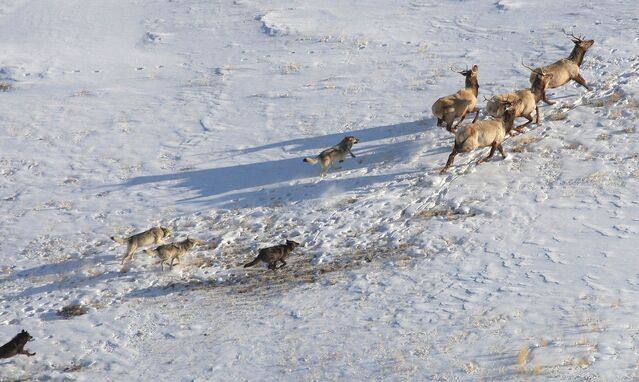
Additionally, Yellowstone research has made some key advances about the adaptive value of sociality. Specifically, pack size and composition were shown to significantly influence reproductive success, hunting success, territorial defense, food defense from scavengers, and even offset the costs of disease, highlighting the value of family living and cooperation. The integration of genetic data allowed for detailed population pedigrees used to evaluate pack formation, mate choice, genetic health and connectivity, and genes under selection. One fascinating story details the evolutionary history of black coat color in wolves and its effect of coat color on behavior, health, and mate choice.
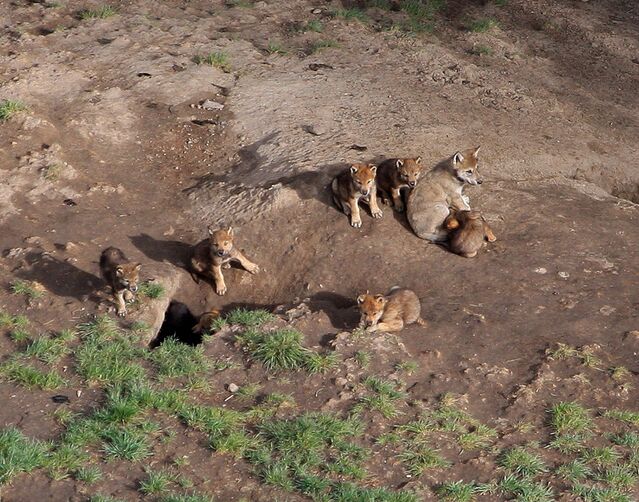
The book also dissects the relative role of reproduction, survival, and dispersal in influencing wolf population dynamics. Several key chapters on wolf-prey relationships give one of the most detailed stories about how, why, and what wolves eat, and the resulting impacts on their main prey, elk, and other species like bison.
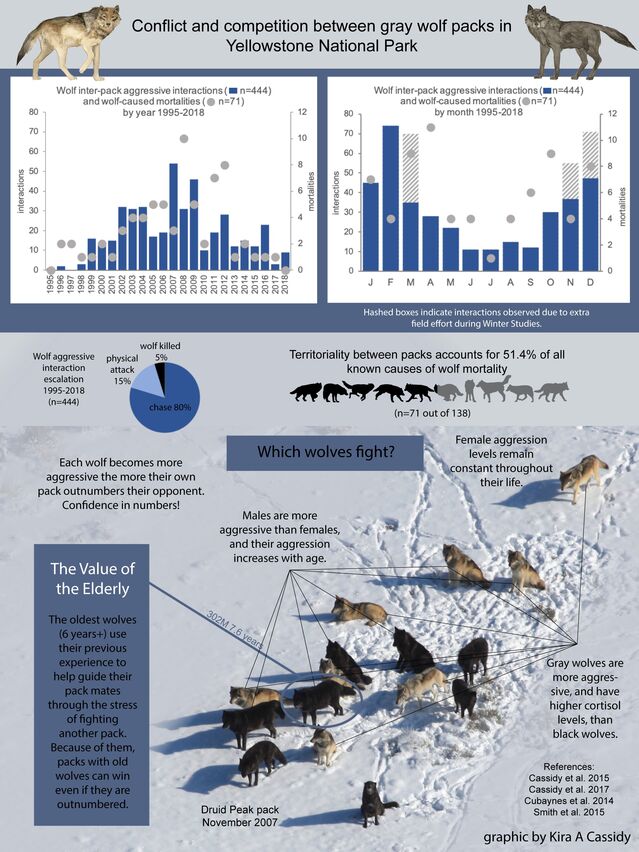
Q: How does your book differ from others that are concerned with some of the same general topics?
A: One of the unique aspects of this book is the detail at which we've been able to advance our understanding of wolves and carnivore ecology in general, as well as document their return to Yellowstone and subsequent impacts on the ecosystem. Because our collective team of contributors has been involved with Yellowstone wolf recovery and research since the beginning, we provide the most thorough telling of this widely celebrated conservation success story. And given the breadth of topics throughout, it is one of the most detailed books about a large carnivore population anywhere in the world.
References
Notes
1) Doug Smith has studied wolves for more than forty years. In 1994 he was hired by the National Park Service in Yellowstone National Park as the project biologist to reintroduce wolves, and in 1997 he became the project leader, a position he still holds today. Besides wolves in Yellowstone, he is also responsible for supervising the park’s bird, elk, and beaver programs. He is coauthor most recently of Decade of the Wolf: Returning the Wild to Yellowstone. Daniel R. Stahler is the Yellowstone Wolf Project’s lead biologist and the project leader of the Yellowstone Cougar Project. In addition, he helps manage the elk program and is Yellowstone National Park’s threatened and endangered species coordinator, working with species like lynx, wolverine, and grizzly bears. Daniel R. MacNulty is associate professor of wildlife ecology in the Department of Wildland Resources at Utah State University and was one of the first volunteers hired by the Yellowstone Wolf Project.
2) The book's description reads: In 2020, it will have been twenty-five years since one of the greatest wildlife conservation and restoration achievements of the twentieth century took place: the reintroduction of wolves to the world’s first national park, Yellowstone. Eradicated after the park was established, then absent for seventy years, these iconic carnivores returned to Yellowstone in 1995 when the US government reversed its century-old policy of extermination and—despite some political and cultural opposition—began the reintroduction of forty-one wild wolves from Canada and northwest Montana. In the intervening decades, scientists have studied their myriad behaviors, from predation to mating to wolf pup play, building a one-of-a-kind field study that has both allowed us to witness how the arrival of top predators can change an entire ecosystem and provided a critical window into impacts on prey, pack composition, and much else. Here, for the first time in a single book, is the incredible story of the wolves’ return to Yellowstone National Park as told by the very people responsible for their reintroduction, study, and management. Anchored in what we have learned from Yellowstone, highlighting the unique blend of research techniques that have given us this knowledge, and addressing the major issues that wolves still face today, this book is as wide-ranging and awe-inspiring as the Yellowstone restoration effort itself. We learn about individual wolves, population dynamics, wolf-prey relationships, genetics, disease, management and policy, newly studied behaviors and interactions with other species, and the rippling ecosystem effects wolves have had on Yellowstone’s wild and rare landscape. Perhaps most importantly of all, the book also offers solutions to ongoing controversies and debates. Featuring a foreword by Jane Goodall, beautiful images, a companion online documentary by celebrated filmmaker Bob Landis, and contributions from more than seventy wolf and wildlife conservation luminaries from Yellowstone and around the world, Yellowstone Wolves is a gripping, accessible celebration of the extraordinary Yellowstone Wolf Project—and of the park through which these majestic and important creatures once again roam. The Table of Contents can be seen here and video of Doug Smith introducing the book can be seen here.
3) The work of tireless wolf researcher Rick Mcintyre can be seen in these pieces: The Reign of Wolf 21, Yellowstone's Benevolent Alpha Male, The Story of Yellowstone Wolf 8: From Underdog to Alpha Male, and The Wolves of Yellowstone Love to Play—Just Like Dogs. For more information on the history of Yellowstone National Park see Engineering Eden: A Violent Death, a Federal Trial, and the Struggle to Restore Nature in Our National Parks by Jordan Fisher Smith.
4) How to Make Studies of Animal Behavior More Reliable. (The STRANGE framework considers sources of bias that could influence how research animals behave, including social background, rearing, genetics, personality, and experience.)




